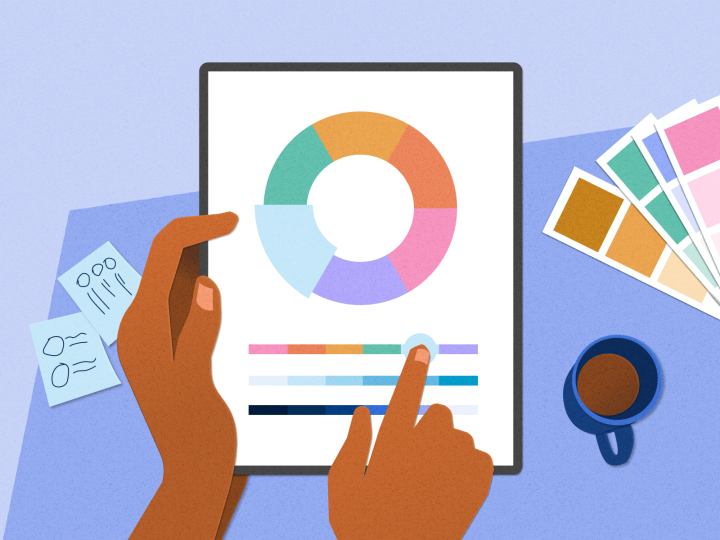7 Proven Web Design South Africa Techniques That Boost User Engagement
The Important Elements of Reliable Internet Design: A Comprehensive Guide
Reliable website design incorporates numerous essential elements that significantly impact customer experience. It requires cautious consideration of factors such as mobile responsiveness, instinctive navigation, and visual hierarchy. Each element plays a necessary function in crafting an internet site that not only brings in site visitors but additionally keeps them. Comprehending these fundamental elements is vital for companies intending to improve their online presence. What truly differentiates an effective web site from its rivals?
Understanding User Experience (UX) Design
Individual experience (UX) Design works as the backbone of effective internet Design, concentrating on just how individuals interact with a site. It encompasses different components, consisting of functionality, access, and general fulfillment. A successful UX Design starts with user research study, identifying the target market's behaviors and demands. Wireframes and models are then established to visualize the website's framework and circulation. Website Design Klerksdorp. Testing with real users gives important insights, permitting developers to improve and fine-tune the interface navigation. Aesthetic Design elements, such as typography and color design, improve the total visual while sustaining functionality. Ultimately, reliable UX Design guarantees that customers can easily complete their goals, cultivating involvement and commitment. By prioritizing customer experience, internet sites can accomplish greater conversion rates and a favorable online reputation
Value of Mobile Responsiveness
As mobile devices increasingly dominate net use, ensuring mobile responsiveness has ended up being necessary for efficient website design. Websites that are not enhanced for mobile can bring about a bad individual experience, resulting in higher bounce rates and shed opportunities. A mobile-responsive Design enables material to adjust perfectly to various display dimensions, making sure that individuals can access info quickly, despite the tool they utilize. Furthermore, search engines prioritize mobile-friendly web sites in their positions, making responsiveness an essential variable for exposure and traffic. With a growing number of users accessing the net via smart devices and tablets, businesses must purchase mobile responsiveness to improve individual interaction, boost brand understanding, and eventually drive conversions. Efficient internet Design should prioritize mobile responsiveness to remain competitive in today's electronic landscape.
Crafting User-friendly Navigation
Navigation serves as the backbone of any effective site, guiding site visitors via content effortlessly. An instinctive navigating framework boosts customer experience by enabling customers to discover info quickly and effectively. Clear labeling of menu things is necessary; it must mirror the material accurately, staying clear of jargon that may confuse customers. Furthermore, a rational pecking order is essential, enabling users to recognize connections between different areas. Consistency throughout pages helps reinforce expectations, while breadcrumbs provide context and a feeling of direction. Receptive navigation food selections that adapt to various tools better enhance accessibility. Ultimately, the objective is to develop a smooth trip for visitors, ensuring they can explore the website without disappointment, causing a much more involved and satisfied target market.
Making Use Of Aesthetic Pecking Order
Aesthetic power structure plays a vital role in website design by leading individuals' focus and boosting their experience. Efficient design methods, along with thoughtful options in shade and typography, can significantly influence exactly how info is regarded and processed. Comprehending these aspects is vital for developing visually enticing and practical sites.
Value of Visual Hierarchy
Efficient website design rests on the idea of visual hierarchy, which overviews individuals through content in a rational and instinctive fashion. This concept is essential for improving user experience, as it assists prioritize info and routes focus to necessary aspects. By establishing a clear hierarchy, web developers can guarantee that individuals quickly determine vital messages, contacts us to activity, and navigating options. A well-structured aesthetic power structure reduces cognitive lots, permitting users to process info effectively. Additionally, it promotes engagement by creating an enticing layout that invites expedition. Ultimately, recognizing the relevance of aesthetic pecking order is essential for any kind of web developer intending to create straightforward and efficient sites that effectively connect their desired messages.

Methods for Effective Layout
An efficient layout functions as the backbone of any kind of effective website design, permitting users to easily navigate through material. Effective techniques include grid systems, which give an organized structure for straightening components, ensuring uniformity and equilibrium. Furthermore, making use of whitespace purposefully can enhance concentrate on vital areas, minimizing visual mess and leading individual interest. Prioritizing content through dimension and placement further highlights crucial info, while different aspects can create a clear visual power structure. Executing responsive Design methods assurances layouts adjust seamlessly throughout tools, preserving functionality. Lastly, including user-friendly navigation aids, such as food selections and switches, enhances customer experience, making it easier for site visitors to locate appropriate details swiftly. With each other, these techniques develop the structure of an effective internet format.
Color and Typography Choices
While shade and typography selections might look like simple Design elements, they play a vital duty in developing aesthetic power structure on a website (Web Design South Africa). Color can direct users' interest, set apart sections, and share brand name identity. By strategically utilizing contrasting shades, designers can highlight crucial contact us to action, ensuring they stick out. Typography, on the other hand, affects readability and user interaction. An appropriate font can share tone and personality, while varying font dimensions and weights can produce a clear framework. Larger, bolder headings attract interest, while smaller sized body text provides thorough details. With each other, reliable color and typography selections produce a natural visual experience, leading customers with the web content effortlessly and improving overall usability
Picking the Right Color Pattern
Just how does one pick the suitable color pattern for a website? Selecting the appropriate shade system is important for improving customer experience and sharing the brand's message. Developers ought to begin by considering the target market and the feelings that various colors evoke. For instance, blue frequently indicates count on, while red can create necessity. It is necessary to limit the palette to a couple of complementary shades to keep visual consistency my explanation and prevent overwhelming users. Utilizing devices like shade wheel applications can aid in choosing colors that function well together. Additionally, designers should assure that there is adequate contrast between message and background shades for readability. Ultimately, a well-thought-out color design can substantially impact an internet site's effectiveness and customer interaction.
Including Involving Material

Involving web content is necessary for preserving the interest and recording of site site visitors. It works as a bridge in between the site's Design and the individual's experience, fostering much deeper connections. Efficient material typically consists of a mix of interesting short articles, bewitching visuals, and interactive elements that urge user involvement. By using storytelling methods, internet sites can evoke emotions, making the product more unforgettable and relatable. Additionally, integrating user-generated web content, such as endorsements or reviews, improves trustworthiness and constructs trust with the audience. Clear calls-to-action guide individuals toward desired results, guaranteeing they remain involved. On the whole, a strategic method to material advancement not only improves individual experience yet additionally drives conversions, making it an important aspect of effective website design.
Enhancing for Rate and Efficiency
Maximizing for rate and efficiency is crucial for improving individual experience on a web site. Strategies such as image compression, minifying CSS and JavaScript, and leveraging browser caching can considerably minimize filling times - Web Design Johannesburg. These strategies not only boost performance but additionally add to better online search engine positions
Picture Compression Methods

Minifying CSS and JavaScript
Many internet developers focus on photo optimization, minifying CSS and JavaScript is just as necessary for enhancing web site rate and efficiency. Minification entails eliminating unneeded personalities from code, such as whitespace, comments, and format, without influencing its capability. This process leads to smaller sized data dimensions, which leads to much faster loading times and boosted individual experience. By reducing the amount of information transferred in between the customer and the web server, minification aids reduce bandwidth usage news and enhances general website efficiency. In addition, internet search engine favor quicker websites, which can enhance search positions. Executing devices and automated procedures for minifying these scripts can improve internet development and maintenance, ensuring that performance stays a top priority throughout the lifecycle of a website.
Leveraging Browser Caching
Leveraging web browser caching greatly enhances site rate and performance by saving regularly accessed sources in your area on a customer's device. This method lessens the demand for duplicated requests to the server, considerably minimizing packing times for returning site visitors. By making use of HTTP headers, internet programmers can define caching rules for various sources, such as manuscripts, stylesheets, and photos. Effectively applied caching strategies allow customers to experience faster web page lots, leading to enhanced customer contentment and interaction. Furthermore, search engines prefer websites with optimized efficiency, potentially boosting search rankings. Routinely managing and assessing cache settings ensures that customers get current web content while still profiting from the efficiency of cached sources. Finally, efficient web browser caching is a crucial component of enhancing internet performance.
Frequently Asked Concerns
How Do I Choose the Right Internet Design Devices?

Picking the ideal website design tools involves assessing job requirements, understanding user requirements, and assessing numerous software attributes. Compatibility, convenience of usage, and community assistance are likewise crucial aspects to take into consideration for effective Design outcomes.
What Prevail Web Design Mistakes to Avoid?
Common website design blunders to avoid consist of chaotic layouts, bad navigating, inadequate mobile responsiveness, sluggish packing times, and neglecting user experience. Reliable layouts prioritize functionality, simpleness, and access to engage customers and enhance contentment.
Exactly How Can I Measure My Website's Success?
To measure a site's success, one might assess metrics such as traffic, conversion rates, user involvement, and bounce rates. Utilizing tools like Google Analytics can provide useful insights for recurring optimization and improvement strategies.
What Duty Does SEO Play in Web Design?
SEO considerably influences website design by guaranteeing that sites are structured for search engine visibility. This includes optimizing website rate, mobile responsiveness, and content high quality, inevitably improving individual experience and driving organic website traffic.
How Frequently Should I Update My Website Design?
The regularity of internet site Design updates relies on sector patterns, user feedback, and technological innovations. Normally, a refresh every 2-3 years is suggested, ensuring the website stays relevant and aligned with current criteria and individual assumptions.
Individual experience (UX) Design offers as the backbone of reliable web Design, concentrating on just how individuals communicate with a site. With an expanding number of customers accessing the web via smart devices and tablet computers, businesses need to spend in mobile responsiveness to enhance individual involvement, enhance brand perception, and inevitably drive conversions. An user-friendly navigating framework enhances individual experience by allowing users to locate info quickly and effectively. Effectively carried out caching techniques enable customers to experience faster page lots, resulting in enhanced customer fulfillment and involvement. The frequency of website Design updates depends on industry trends, individual responses, and technological innovations.